Acne scar treatment requires thorough evaluation as well as clear communication about expected outcomes and long-term strategy. It’s important to understand that one acne scars treatment strategy does not apply to everyone, and it’s not usually a one-time process in which we do one thing and you’re done. When seeking medical advice on acne scar treatment, keep in mind that different doctors will give you different advice because there are multiple approaches to these issues. Practitioners make recommendations based on their experience and, in many cases, the latest branded device they are currently leasing.
Acne Scar Treatment at Prasad Cosmetic Surgery NYC and Garden City
I’ll discuss the steps I go through when evaluating a patient with acne scars, as well as how I make recommendations, and set expectations. For patients with acne scars, I use lasers; radiofrequency technology; Skin Boosting; regenerative medicine like PRP or platelet-rich plasma, and Acellular matrix; as well as acne scar surgery like subcision, scar removal, and skin grafting.
When I examine a patient with acne scarring, I take high-resolution digital photos as well as photos using a technique called backlighting to examine the shadows, which tell me about the depth and extent of the scars.

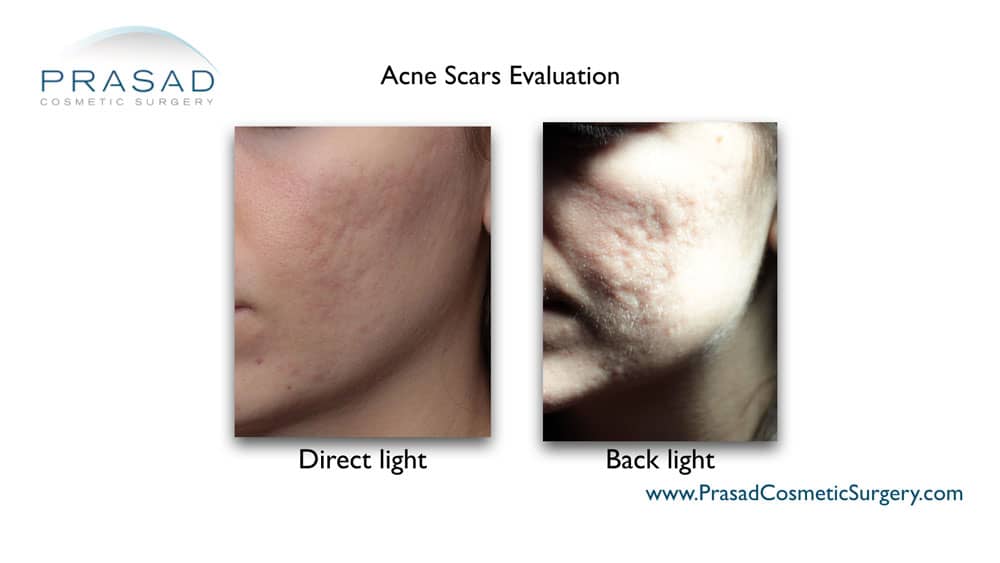
Acne Scar Treatment Before and After
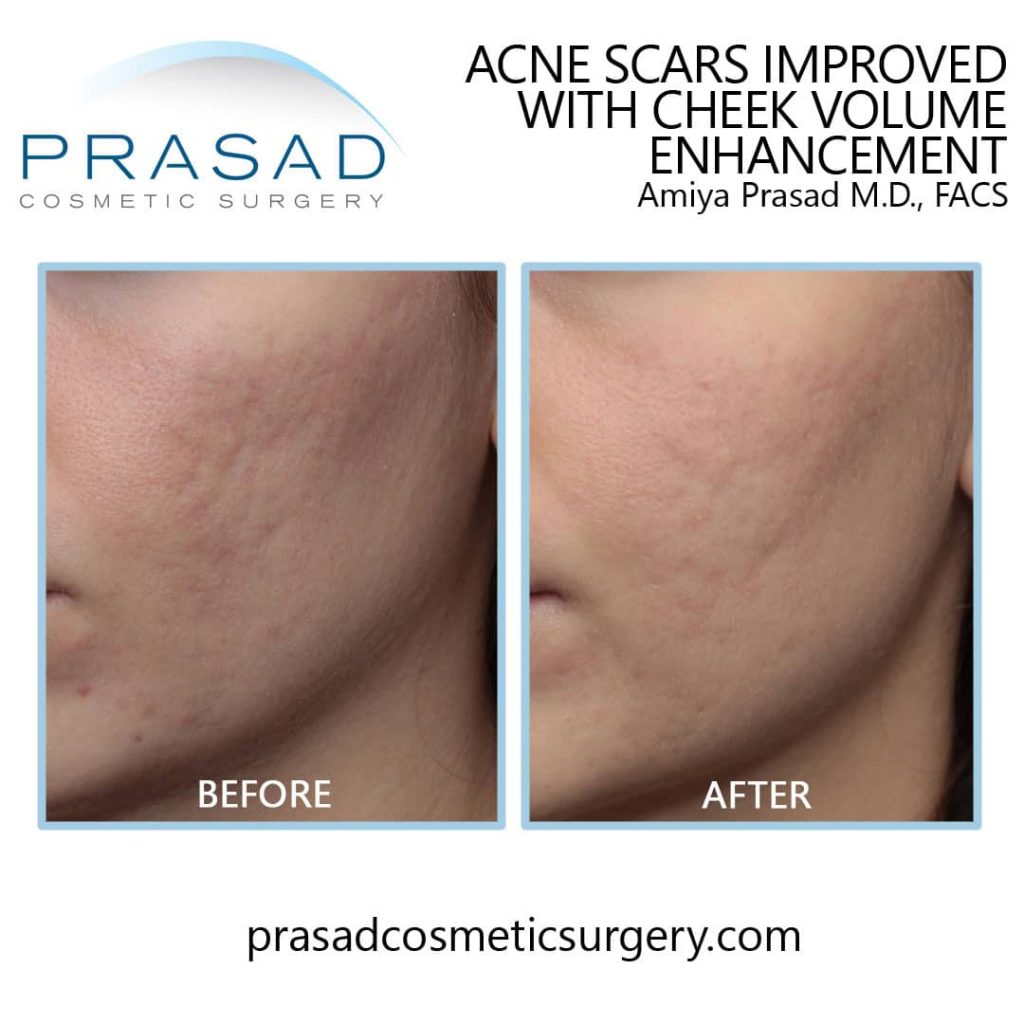
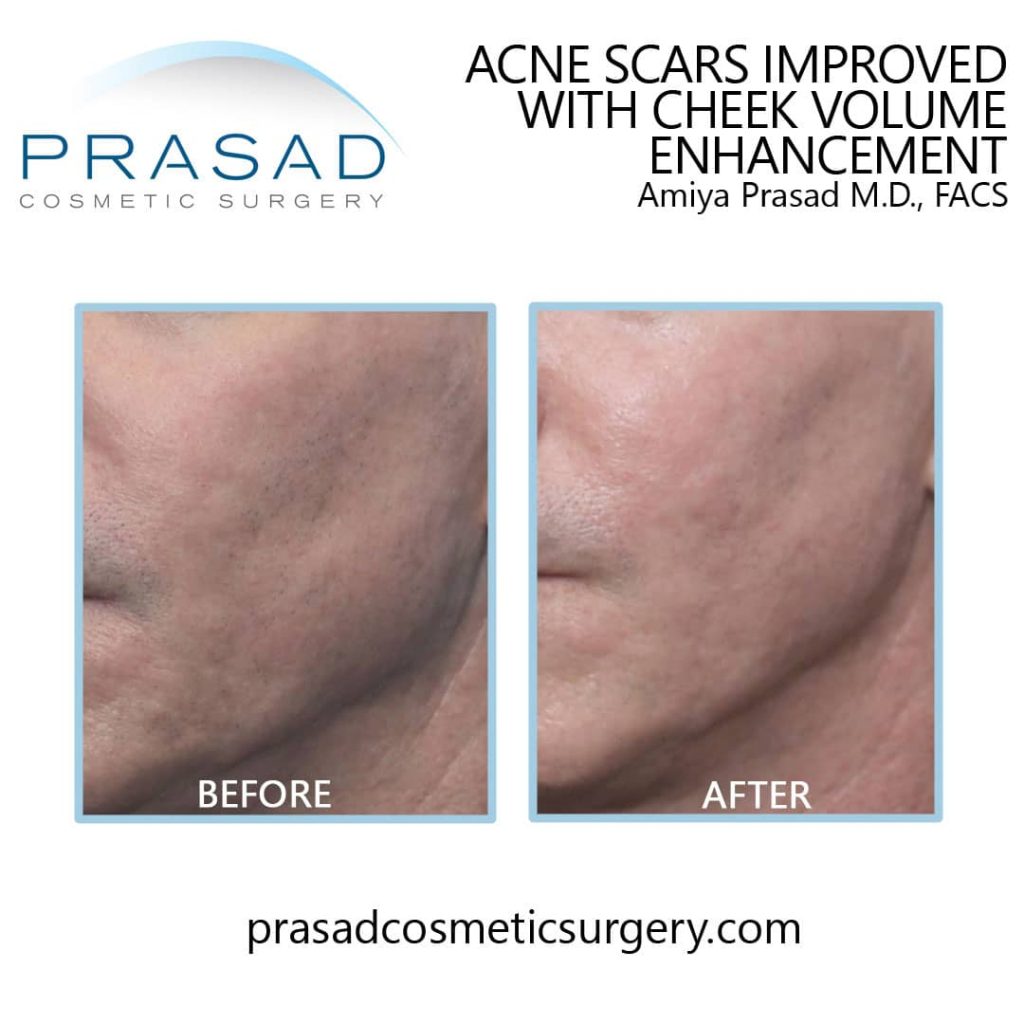
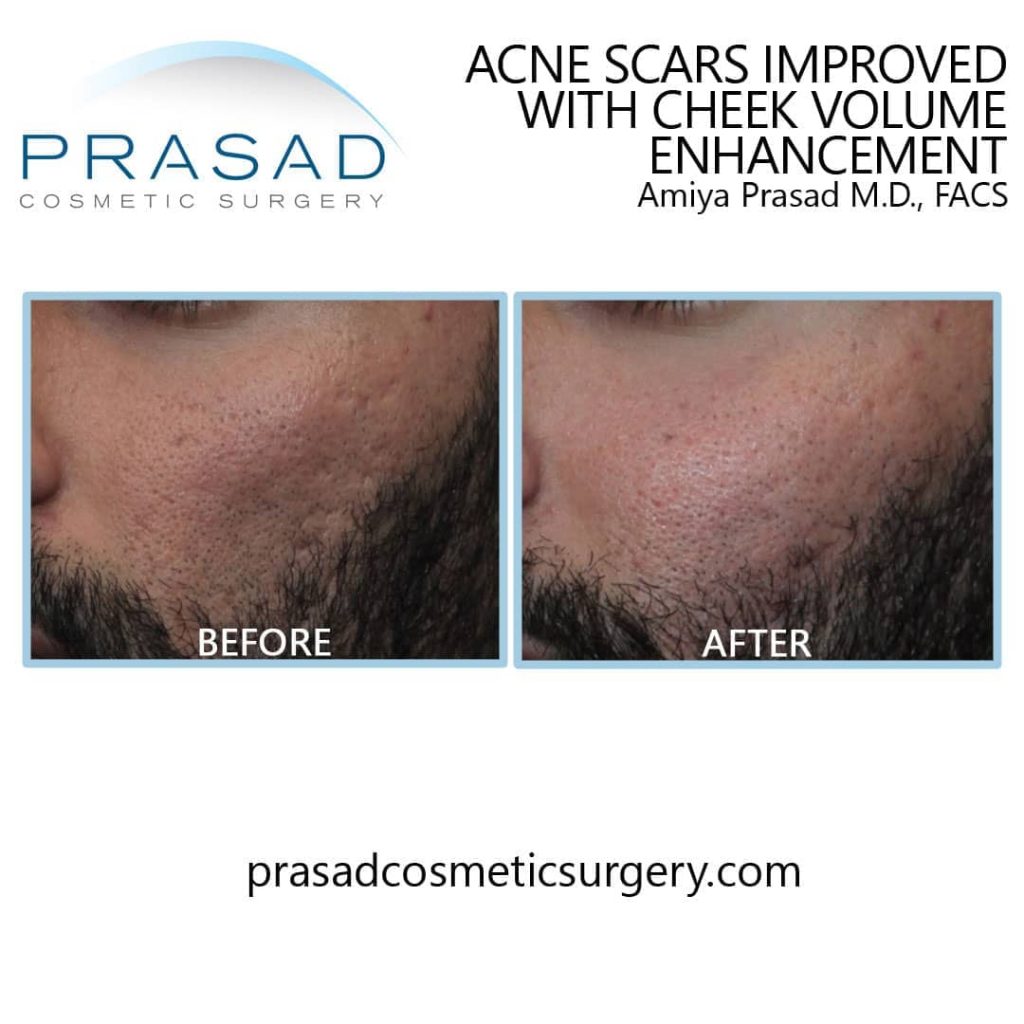
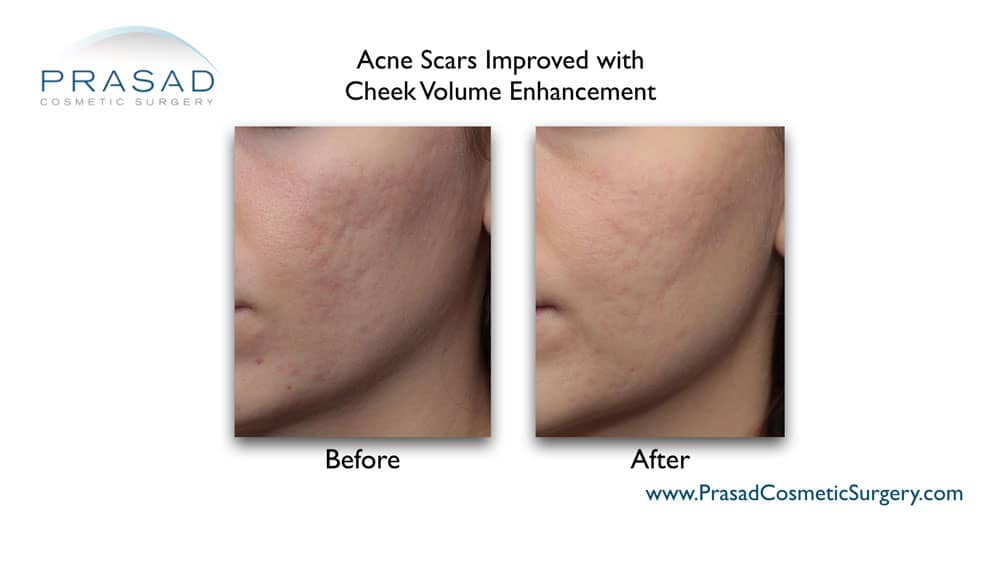
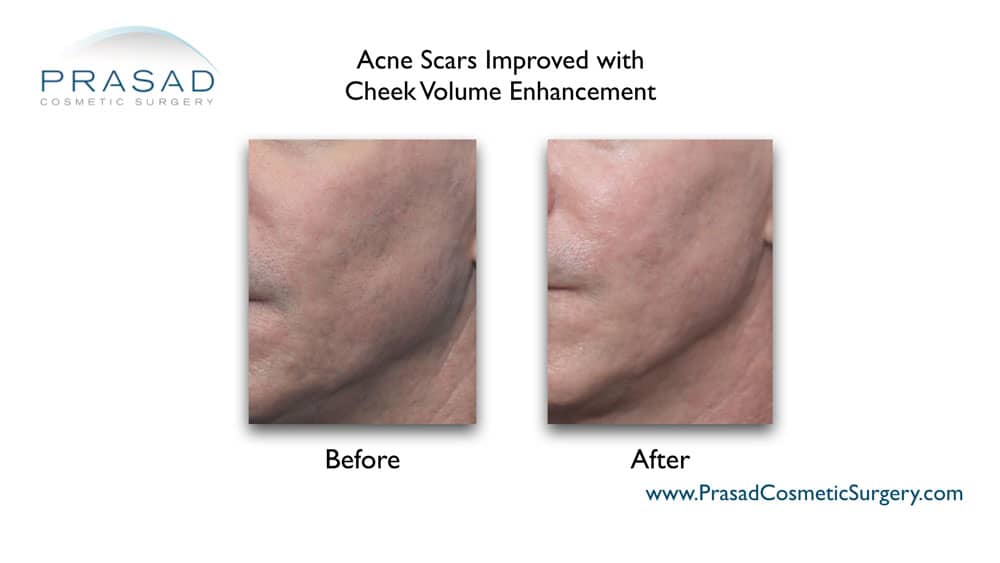
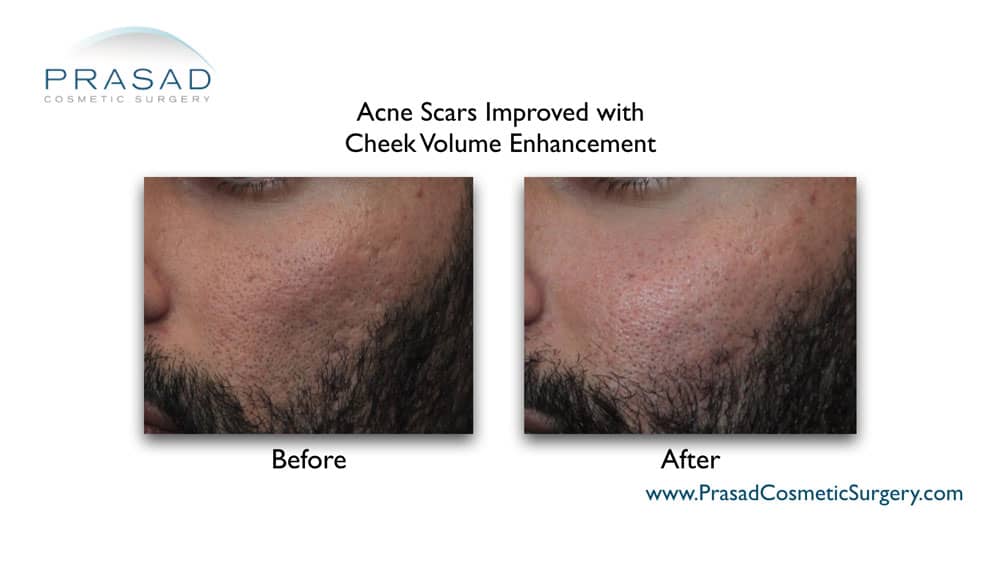
What are the Different Types of Acne Scars?
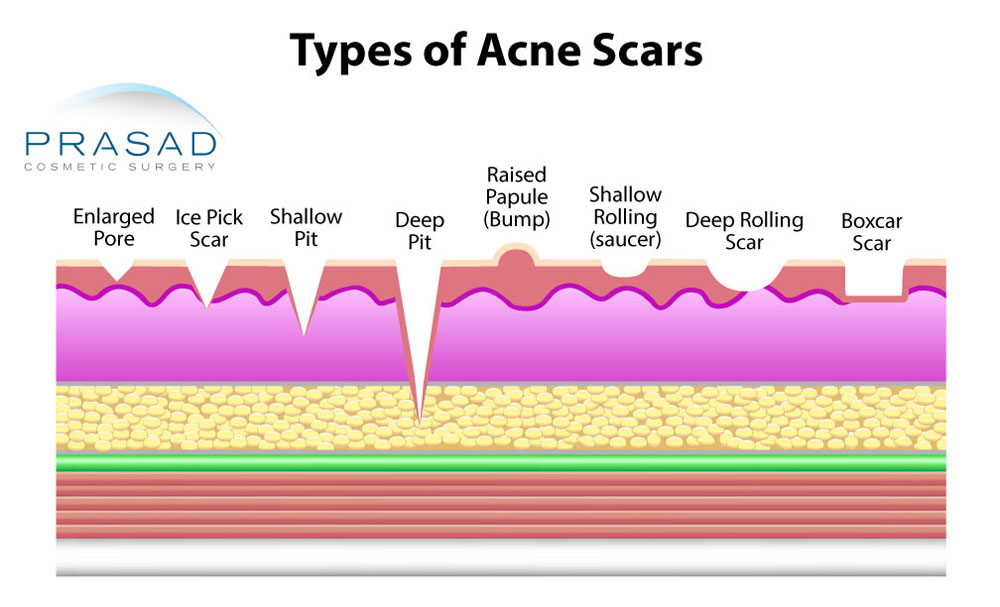
Acne scars are typically classified as rolling scars, boxcar scars, and ice-pick scars. There are different levels of all of these scarring, and a strategy is developed based on these specific classifications.
How to Deal with Acne Scars?
When you’re dealing with acne scars, you are dealing with one common issue — tissue loss. The underlying strategy is to increase the volume of deficient tissue, and blend the interface between normal skin and the adjacent area of tissue loss.
Unfortunately, because of aggressive marketing, many people with acne scars jump from one laser therapy to another, resulting in frustration and disappointment. A very important limitation is the generally accepted standard amongst ethical professionals as to the maximum level of change that can occur with acne scars. Generally speaking, an improvement of 20% followed by maintenance procedures is a realistic plan. Of course, the term 20% can be up for subjective interpretation. For my patients, I find that defining success as any improvement avoids unrealistic expectations.
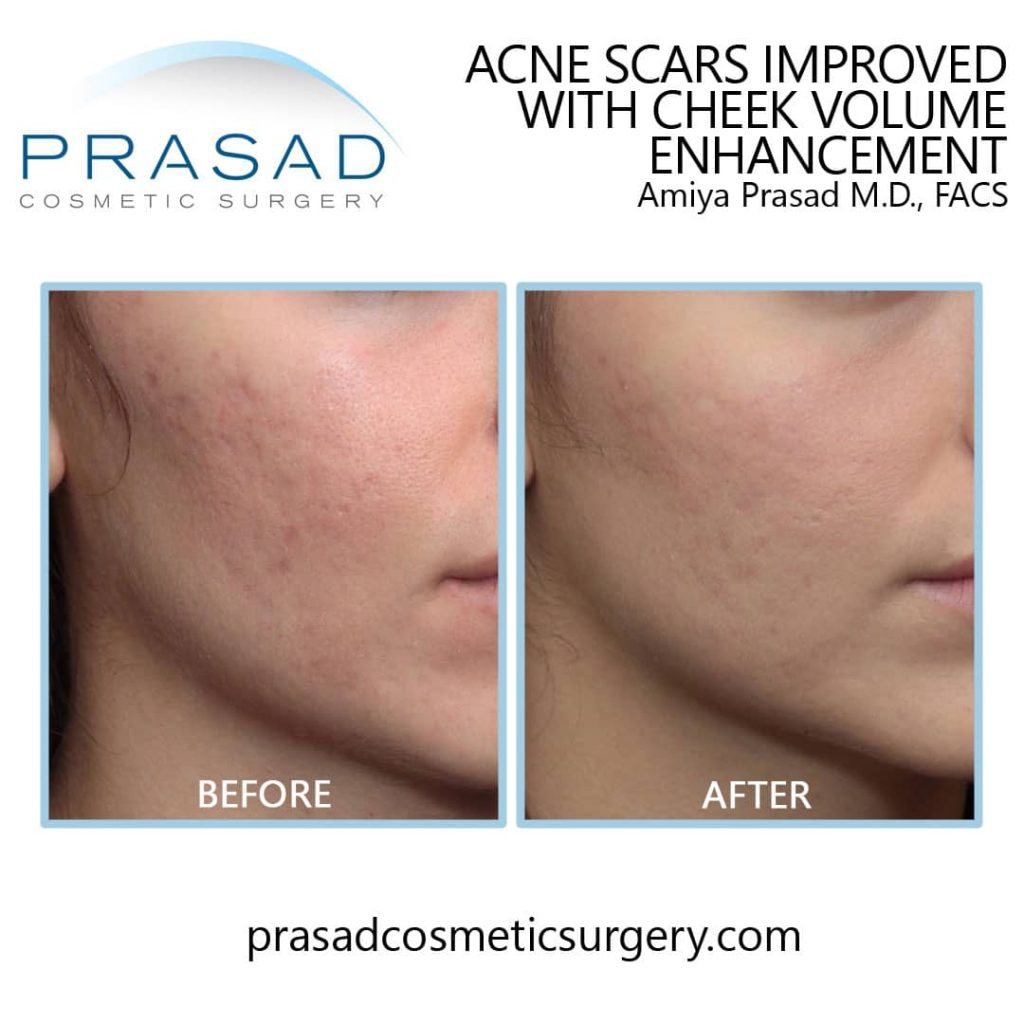
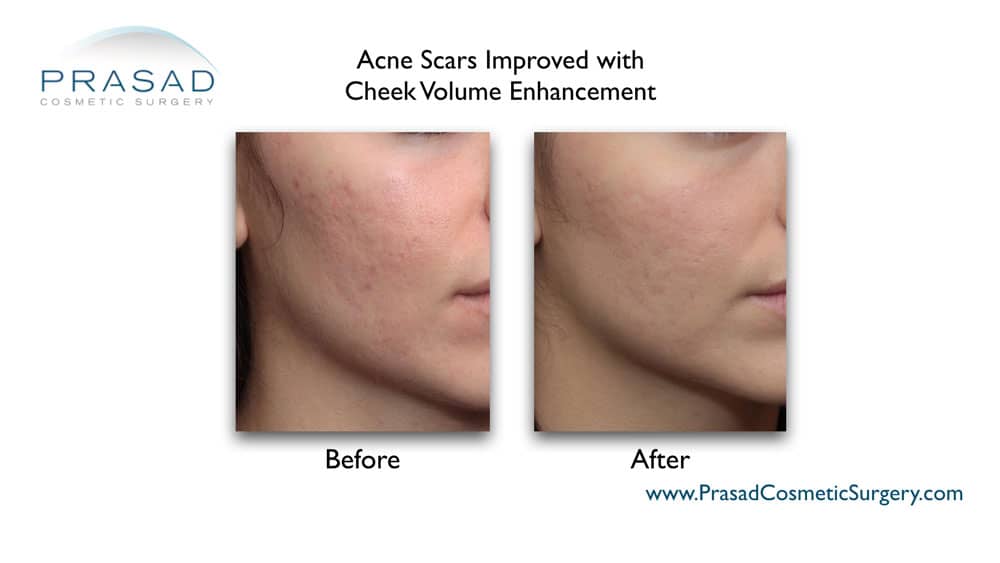
My approach to acne scars is similar to how I approach facial aging. I develop a tailored strategy that works from the inside out. For example, if I can increase cheek volume, I will use long-lasting fillers like Juvederm Ultra Plus or Juvederm Voluma at the bone level. The improvement in projection can help to soften the appearance of acne scars significantly, which is especially important as the natural aging of the face progresses. I can also see how improvements in volume and facial balance can draw attention away from acne scars.
At the skin level, it is commonly accepted that various lasers can help depressed scars by controlled injury which then stimulates a healing response by cells in the skin called fibroblasts to produce collagen. The question is, how much of a difference can be achieved when the tissue is scarred? In addition, how much collagen generation can occur when the patient has had one or more previous laser, radiofrequency or microneedling procedures?
PRP for Acne Scar
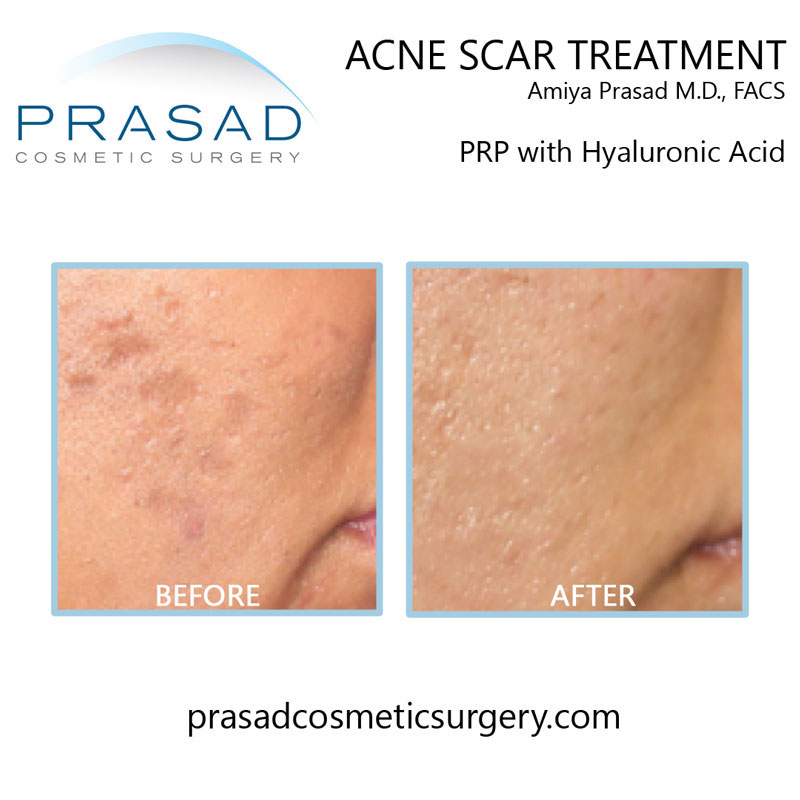
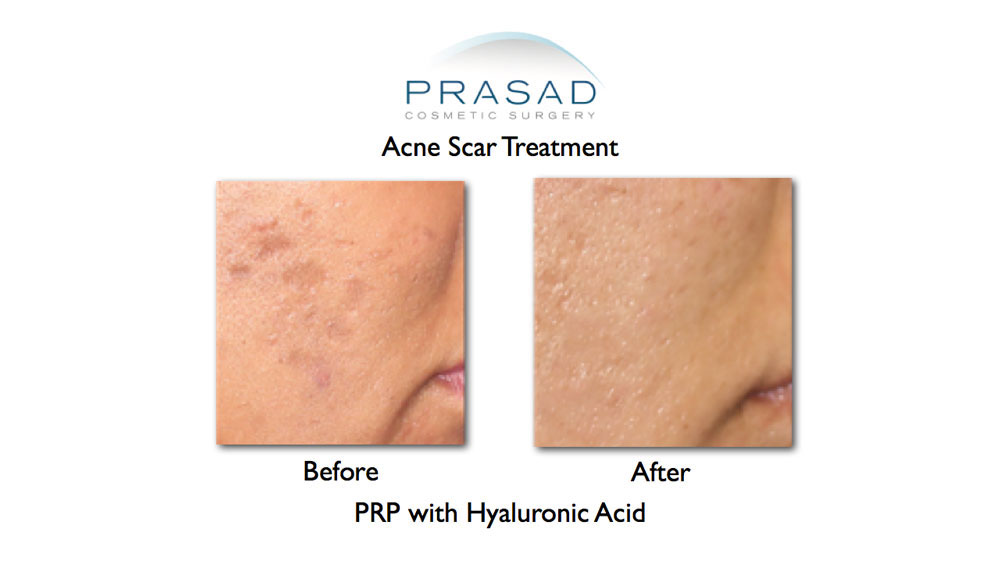
As a first line treatment before or in conjunction with non-ablative laser treatment, I consistently incorporate the use of PRP or platelet-rich plasma to induce collagen production without causing significant injury. PRP, or platelet-rich plasma, stimulates collagen production while also improving blood flow and softening scar tissue. I routinely combine PRP with hyaluronic acid filler, which is delivered to the dermis via a procedure called skin boosting, for patients with boxcar scars.
Rolling Acne Scars Treatment
Rolling scars and scars associated with a lack of underlying fat are often managed through a combination approach. Procedures such as subcision, and injectable fillers placed on the bone level, below the skin, and in the dermis are very effective.
Laser for Acne Scars
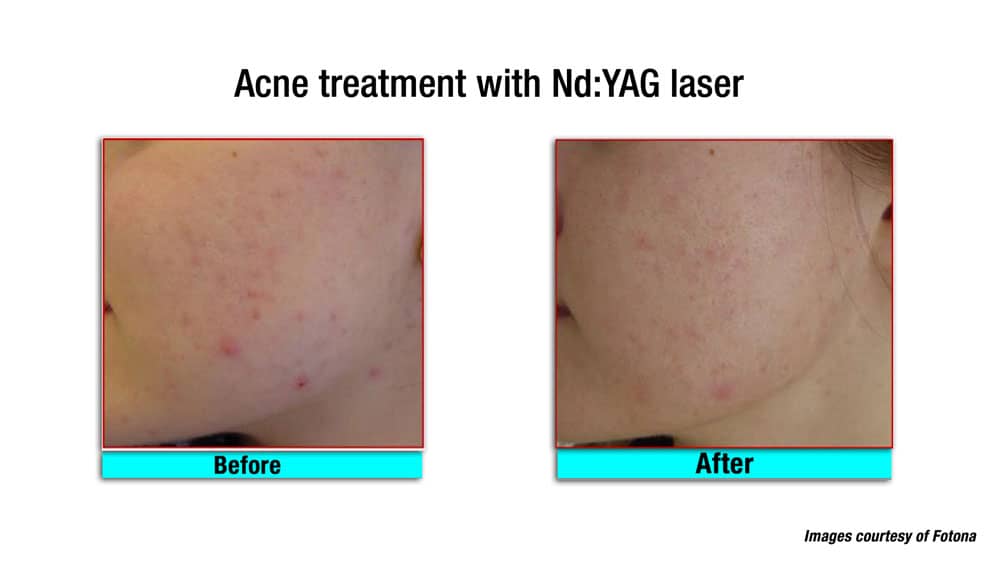
Microdermabrasion for Acne Scars
Another approach, which is more convenient, and beneficial particularly for shallow scars is water-based microdermabrasion or Hydrafacial. With Hydrafacial, there is no downtime, and improvement in the skin can be appreciated immediately afterward.
I recommend that any therapeutic strategy for acne scars involve regular follow-up examinations with some maintenance procedures, which are individualized.

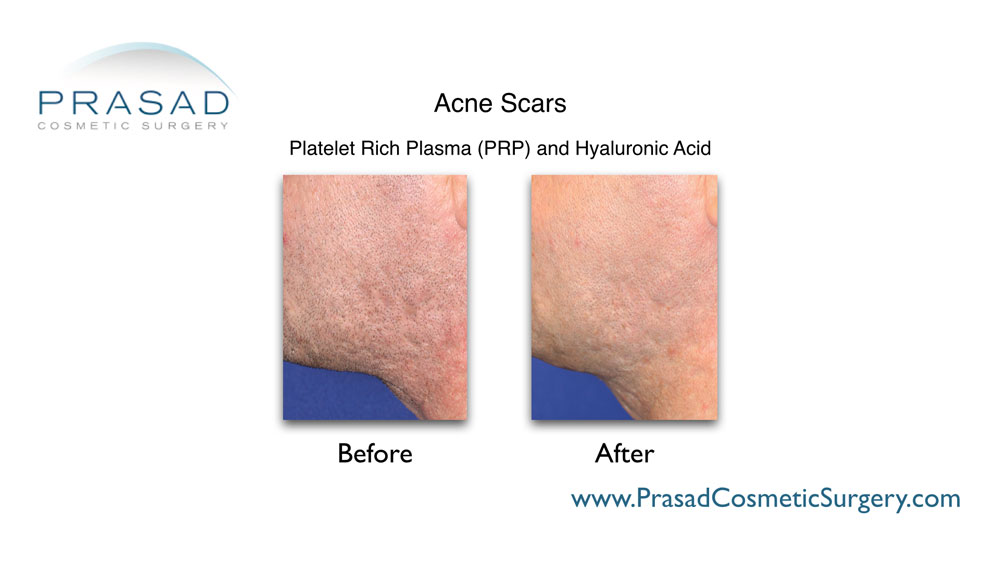
Conclusion
In an era when devices are aggressively marketed, and unrealistic expectations are promoted, it is more important than ever to find a physician you can trust to act in your best interests. All too often, new devices enter the market, and many doctors buy or lease these devices, only thinking about the transaction, and having no interest in a long-term management plan. I recommend that you consult with experienced doctors to ensure that you are well informed and confident in the doctor’s treatment plan for you, as well as the short and long-term outlook.
